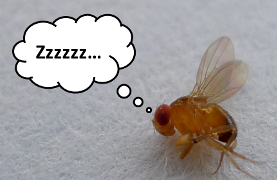This week in PLOS Biology
In PLOS Biology this week you can read about animals’ adaptability to climate change, generation of antibody diversity, age-related sleep problems, economic models of poverty and a new form of the yeast Candida albicans.
As the climate continues to change, to what extent will species be able to keep pace with altered temperatures and shifted seasons? In a research article this week Floriane Plard, Jean-Michel Gaillard, Christophe Bonenfant, and colleagues attempt to address this question using a long-term dataset on roe deer of France’s Champagne region. They found that although spring now arrives in the region two weeks earlier than it did in 1985, roe deer have failed to keep their reproductive cycle in sync with the flush of fresh green leaves needed by the mothers to make nutritious milk. The result is a general reduction in the survival of the foals, and a decline of the deer population growth as a whole. We can draw a sombre warning from these findings: not all species should be expected to adapt to changing climates. Read more in the accompanying synopsis.
Antibodies are proteins that play an essential part in our immune response: they recognise foreign objects (such as bacteria and viruses), bind to them and either destroy them directly or flag them for the attention of another part of the immune system. But different pathogens require different antibodies, and to help maximise diversity the B lymphocyte cells that make antibodies are able to direct mutations to their antibody genes and thereby produce millions of different variations. But how exactly do they do this? New research by Jean-Marie Buerstedde, David Schatz and co-authors found that enhancer elements – DNA sequences that drive transcription of the antibody genes – are responsible for recruiting the mutagenic machinery to the correct targets. Interestingly this mechanism is shared broadly between species (mouse, human and chicken), and is therefore relatively ancient and evolutionarily conserved.
The older we get, the more difficult it is to initiate and maintain a good night’s sleep. Sleep disorders affect about half of the population over the age of 65 and are associated with reduced quality of life and poor health. In research published this week, Athanasios Metaxakis, Linda Partridge and colleagues investigated the mechanisms by which ageing impairs sleep, using the fruit fly as a model organism (like us, flies are active during the day and sleep at night, and they also experience age-related sleep disruption). They found that reduced insulin signalling improves sleep quality in flies and protects against age-related sleep deterioration. This could have applications for potential therapeutic targets to improve sleep quality in humans.
An Essay by Calistus Ngonghala, Matthew Bonds and colleagues explores how coupled models of ecology and economic growth can provide key insights into factors driving the formation and persistence of poverty traps. Understanding why poverty persists in some human populations remains a significant challenge. Economists have developed various models to explain persistent poverty (for example neoclassical growth theory and more micro-orientated models) but Ngonghala and colleagues demonstrated the utility of coupling this information with ecological data, for example a model of infectious diseases.
Candida albicans is a fungus which can cause various infections in humans, including hospital-acquired infections which have become a source of major health concerns. This yeast is known to have the capacity to grow in several distinct forms, a shape-shifting skill that is critical for its ability to thrive in its human host. Li Tao, Guanghua Huang and colleagues report a new form of C. albicans – the ‘gray’ type, which along with the previously discovered ‘white’ and ‘opaque’ cell types forms a three-way switching system.


